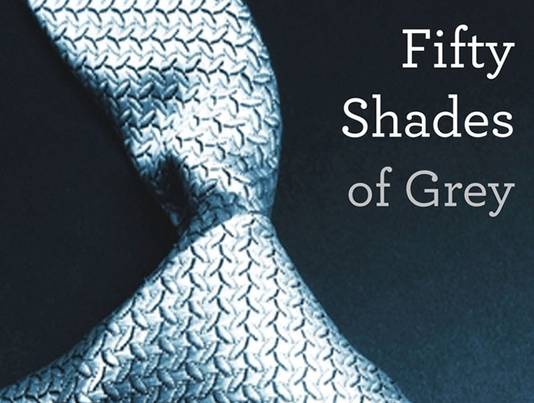Hollywood is buzzing over the impending film adaptation of 50 Shades of Grey, the hit erotic novel by E.L. James that turned publishing on its head and brought bondage sex into the literary mainstream.
The screenwriter, Kelly Marcel, has made her intentions clear: she wants to court the NC-17 rating that has traditionally doomed other racy films to failure, in the hope that 50 Shades, with its large following, will transcend the stigma.
Now the buzz is about which Hollywood stars will be chosen for the starring roles–in other words, which celebrity femme you’d most like to see chained to a ceiling and slapped, and by which teen heartthrob in ripped jeans. Conservatives will, no doubt, recoil at the continued coarsening of our popular culture, at the abnormal becoming normal. Yet there is much of interest for conservatives in the 50 Shades phenomenon.
At first, it is difficult to understand the immense popularity of the book. It has no literary merit whatsoever. Its characters are two-dimensional clichés–the young, shy heroine; the fabulously wealthy, handsome, powerful hero secretly nursing a dark secret. The plot is not much better–a doomed flirtation across hundreds of pages, different from the classic romance novel only in that the sex comes first and the courtship afterwards.
The novelty, for many readers, is the book’s focus on bondage (or BDSM, more broadly) as the chief mode of sexual interaction between the characters, and the chief conflict in the novel’s love story (he wants her pain; she wants his love). But these are not really new themes, either; they were explored ten years ago in Paulo Coelho’s Eleven Minutes and two hundred years ago in the works of the Marquis de Sade (hence “sadism”).
Two things are different. One is the emergence of reading devices such as the Kindle and Nook, which allow shy readers to satisfy their curiosity in relative privacy, without having to carry the book to the register in front of a line of customers, for example. The other is that 50 Shades piggybacks on the success of the Twilight vampire novels–also featuring dominant men, without the bondage–and in fact began as Twilight fan fiction.
Both 50 Shades and the new fantasy genre in general reflect what seems to be a deep anxiety about feminism among contemporary women. The heroine of 50 Shades is an educated woman about to start her career–and yet she is tempted to yield control of her life, down to the most intimate details, to a determined man. He, in a sense, is a feminist also, providing her with a contract, seeking her written consent to her total submission.
Over the course of the novel, the two arrive at a sort of compromise; he even enjoys his first experience with ordinary, “vanilla” sex. Yet she cannot (spoiler alert) bring herself to cement their bond because she does not trust his hints of affection; her independence is too cherished and fragile to withstand the risk of pain, both physical and emotional.
In short, she is ambivalent about freedom. And that feeling is shared widely enough for readers to overlook the novel’s shortcomings (such as awkward sex writing–the hero’s orgasm is described repeatedly as “his release,” for example). 50 Shades is frequently described (derided) as “mommy porn”–indeed, it was recommended to me by one of my wife’s friends from an exercise class for new mothers–and the choices that motherhood presents today might make it acutely relevant to career-minded female readers.
Conservatives do not have ready answers to these dilemmas, beyond vague support for traditional family values, which is easily caricatured by the left as “taking us back to the 1950s.” The oppression of domesticity is apparently so frightening that women seem to prefer the fantasy of handcuffs and spankings to changing diapers and baking cookies.
How all of this will translate to the big screen is a mystery. Much of the tension in the novel is expressed in the heroine’s internal monologue, which is strikingly inarticulate: “Holy f—” recurs often, as do “What?” and “Jeez.” The words of Joan Didion, who anticipated the contradictions of this age at its dawn, come to mind: “I am still committed to the idea that the ability to think for oneself depends upon one’s mastery of the language.” Perhaps today’s women–and men–lack the words for what we really need.

COMMENTS
Please let us know if you're having issues with commenting.